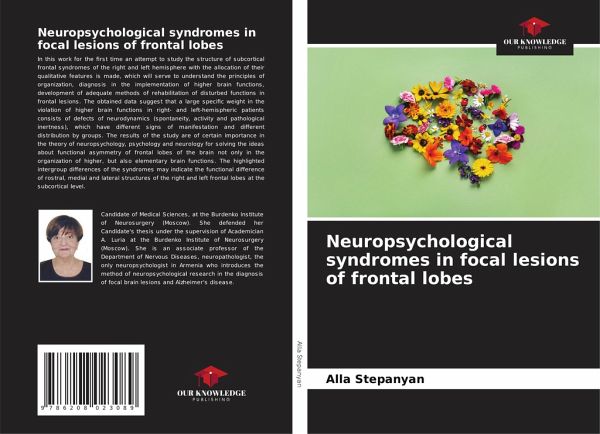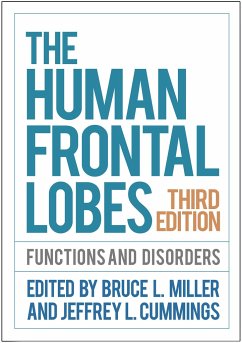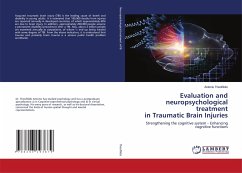
Neuropsychological syndromes in focal lesions of frontal lobes
Versandkostenfrei!
Versandfertig in 6-10 Tagen
37,99 €
inkl. MwSt.

PAYBACK Punkte
19 °P sammeln!
In this work for the first time an attempt to study the structure of subcortical frontal syndromes of the right and left hemisphere with the allocation of their qualitative features is made, which will serve to understand the principles of organization, diagnosis in the implementation of higher brain functions, development of adequate methods of rehabilitation of disturbed functions in frontal lesions. The obtained data suggest that a large specific weight in the violation of higher brain functions in right- and left-hemispheric patients consists of defects of neurodynamics (spontaneity, activ...
In this work for the first time an attempt to study the structure of subcortical frontal syndromes of the right and left hemisphere with the allocation of their qualitative features is made, which will serve to understand the principles of organization, diagnosis in the implementation of higher brain functions, development of adequate methods of rehabilitation of disturbed functions in frontal lesions. The obtained data suggest that a large specific weight in the violation of higher brain functions in right- and left-hemispheric patients consists of defects of neurodynamics (spontaneity, activity and pathological inertness), which have different signs of manifestation and different distribution by groups. The results of the study are of certain importance in the theory of neuropsychology, psychology and neurology for solving the ideas about functional asymmetry of frontal lobes of the brain not only in the organization of higher, but also elementary brain functions. The highlighted intergroup differences of the syndromes may indicate the functional difference of rostral, medial and lateral structures of the right and left frontal lobes at the subcortical level.














